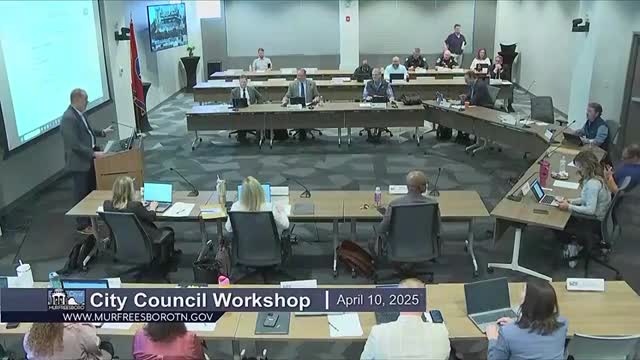Murfreesboro City Schools warn budget strain as county moves property-tax ‘pennies’
April 12, 2025 | City Council Meetings, Murfreesboro City, Rutherford County, Tennessee
This article was created by AI summarizing key points discussed. AI makes mistakes, so for full details and context, please refer to the video of the full meeting. Please report any errors so we can fix them. Report an error »

Dr. Duke, superintendent of Murfreesboro City Schools, told the City Council on April 10 that the district expects modest enrollment growth for 2025–26 and a roughly $2.1 million increase in state funds but faces larger, recurring revenue losses tied to county decisions to move shared property-tax “pennies” into nonshared capital accounts.
Duke said the district projects an increase of about 228 students for next year—roughly a 1.27% rise—and reported the district now serves approximately 14.94% of K–12 students in Rutherford County, a figure used to calculate the city schools’ portion of sales and property tax. He said the $2.1 million projected increase in state revenue is tied to the TISA funding formula and will largely be used for employee compensation.
The superintendent and school-board members told council that Rutherford County has shifted 19 “pennies” of a shared property-tax allocation over the past three years; the district’s staff estimated the movement reduced city-school property-tax revenue by about $2.9 million annually and by roughly $7 million in total over that period, assuming stable property-tax assessments. Duke said those recurring losses exceed the new state funding and are depleting the district’s fund balance: he estimated fund balance could drop from roughly 17% to about 13% this year under current assumptions.
Duke outlined local steps the district is already taking: pausing some new positions, scaling back one-time nonpersonnel expenses, limiting new growth positions and planning for a modest cost-of-living increase in the vicinity of 2%. He said the district is evaluating classroom staffing levels and program costs and that the budget in development will be “tight.” He also said the district can absorb the current shortfall this year but cannot continue absorbing similar losses in subsequent years without further cuts or new revenue.
Council members and Mayor Mary McFarland discussed possible next steps, including briefing county commissioners and state legislators and providing the public with comparative estimates of what city-supported education costs would look like if the city school system were not operating. Several council members urged outreach to county commissioners and the municipal delegation and asked staff to provide additional financial analysis for council consideration.
No formal council action was taken at the meeting; the discussion served as a budget preview and a request for continued information and intergovernmental engagement.
Duke said the district projects an increase of about 228 students for next year—roughly a 1.27% rise—and reported the district now serves approximately 14.94% of K–12 students in Rutherford County, a figure used to calculate the city schools’ portion of sales and property tax. He said the $2.1 million projected increase in state revenue is tied to the TISA funding formula and will largely be used for employee compensation.
The superintendent and school-board members told council that Rutherford County has shifted 19 “pennies” of a shared property-tax allocation over the past three years; the district’s staff estimated the movement reduced city-school property-tax revenue by about $2.9 million annually and by roughly $7 million in total over that period, assuming stable property-tax assessments. Duke said those recurring losses exceed the new state funding and are depleting the district’s fund balance: he estimated fund balance could drop from roughly 17% to about 13% this year under current assumptions.
Duke outlined local steps the district is already taking: pausing some new positions, scaling back one-time nonpersonnel expenses, limiting new growth positions and planning for a modest cost-of-living increase in the vicinity of 2%. He said the district is evaluating classroom staffing levels and program costs and that the budget in development will be “tight.” He also said the district can absorb the current shortfall this year but cannot continue absorbing similar losses in subsequent years without further cuts or new revenue.
Council members and Mayor Mary McFarland discussed possible next steps, including briefing county commissioners and state legislators and providing the public with comparative estimates of what city-supported education costs would look like if the city school system were not operating. Several council members urged outreach to county commissioners and the municipal delegation and asked staff to provide additional financial analysis for council consideration.
No formal council action was taken at the meeting; the discussion served as a budget preview and a request for continued information and intergovernmental engagement.
View full meeting
This article is based on a recent meeting—watch the full video and explore the complete transcript for deeper insights into the discussion.
View full meeting
